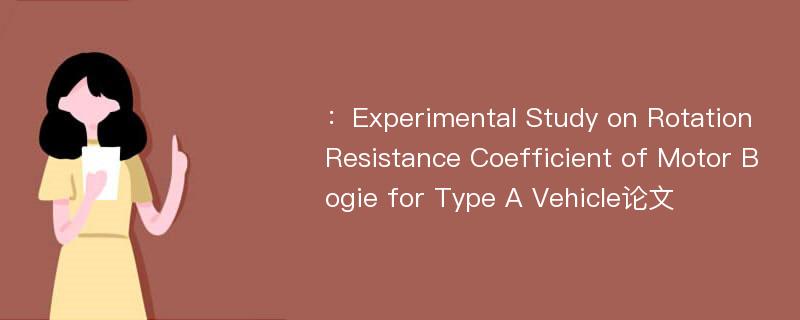
本文主要研究内容
作者(2019)在《Experimental Study on Rotation Resistance Coefficient of Motor Bogie for Type A Vehicle》一文中研究指出:Rotation resistance coefficient is an important operating parameter for vehicle bogies, which influences the dynamic behavior of vehicles directly. A research on the rotation resistance coefficient of type A vehicle motor bogies was conducted by means of theoretical calculation, dynamic simulation, test certification, and so on. Result of the simulation analysis shows that the rotation resistance coefficient relates to air springs stiffness and negotiated curve radii, and it varies proportionally with the change of air springs horizontal stiffness. The greater the rotation angle is, the greater the factor becomes. The certifications made under the operating conditions(e.g., different air spring status, different rotation speeds) indicate that the rotation resistance coefficient increases with the increase of the rotation speed. The anti-yaw dampers can contribute to the rotation resistance torque acted on bogie, and the greater the rotation speeds are, the greater the torque generated by the anti-yaw dampers is. The results suggest that the theoretical analysis and dynamics simulation are in accordance with the results from the bogie bench tests, which meet the requirements in EN14363 and the indicators in vehicles safe operation.
Abstract
Rotation resistance coefficient is an important operating parameter for vehicle bogies, which influences the dynamic behavior of vehicles directly. A research on the rotation resistance coefficient of type A vehicle motor bogies was conducted by means of theoretical calculation, dynamic simulation, test certification, and so on. Result of the simulation analysis shows that the rotation resistance coefficient relates to air springs stiffness and negotiated curve radii, and it varies proportionally with the change of air springs horizontal stiffness. The greater the rotation angle is, the greater the factor becomes. The certifications made under the operating conditions(e.g., different air spring status, different rotation speeds) indicate that the rotation resistance coefficient increases with the increase of the rotation speed. The anti-yaw dampers can contribute to the rotation resistance torque acted on bogie, and the greater the rotation speeds are, the greater the torque generated by the anti-yaw dampers is. The results suggest that the theoretical analysis and dynamics simulation are in accordance with the results from the bogie bench tests, which meet the requirements in EN14363 and the indicators in vehicles safe operation.
论文参考文献
论文详细介绍
论文作者分别是来自Journal of Harbin Institute of Technology(New Series)的,发表于刊物Journal of Harbin Institute of Technology(New Series)2019年02期论文,是一篇关于,Journal of Harbin Institute of Technology(New Series)2019年02期论文的文章。本文可供学术参考使用,各位学者可以免费参考阅读下载,文章观点不代表本站观点,资料来自Journal of Harbin Institute of Technology(New Series)2019年02期论文网站,若本站收录的文献无意侵犯了您的著作版权,请联系我们删除。
标签:Journal of Harbin Institute of Technology(New Series)2019年02期论文;
